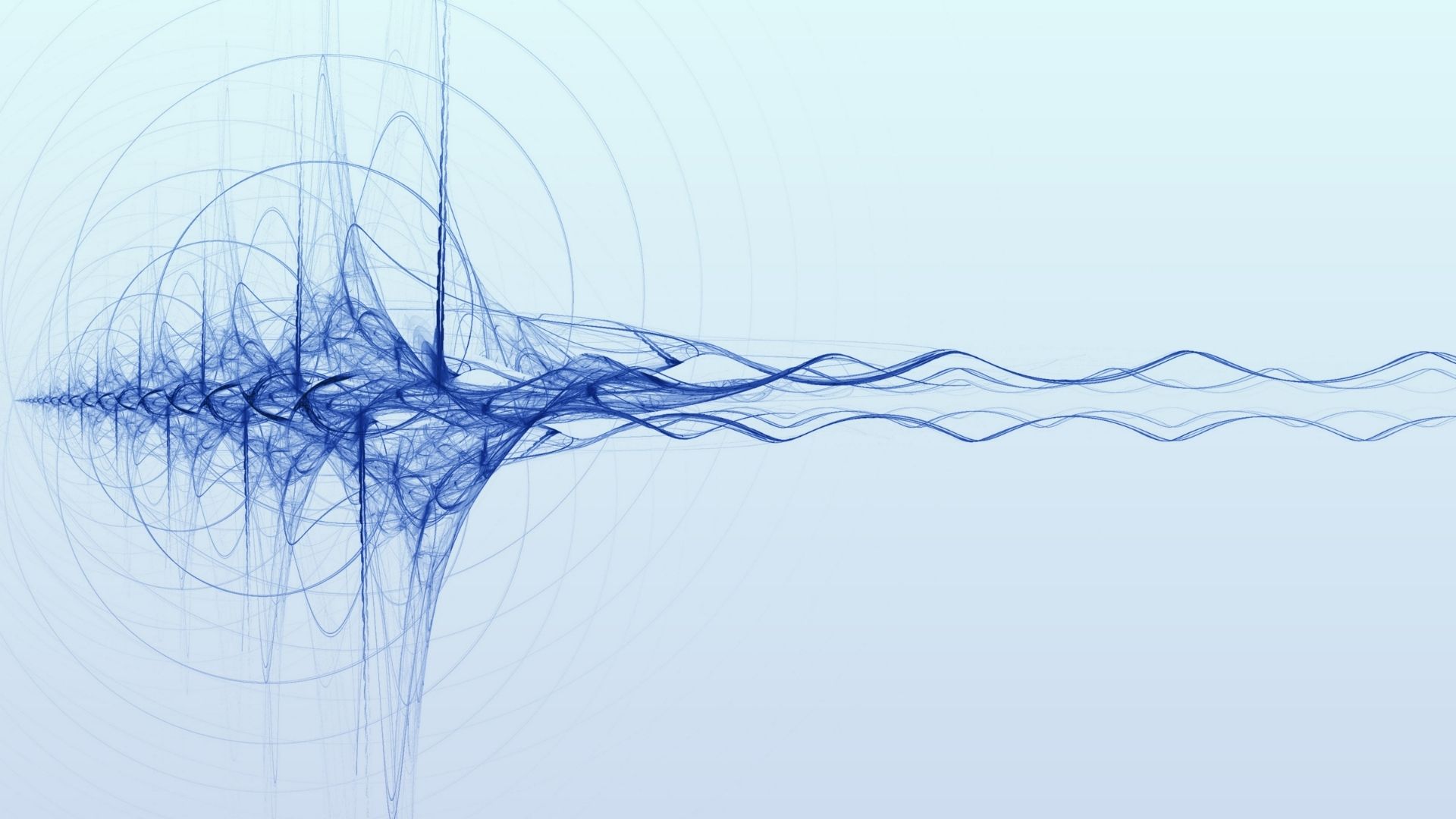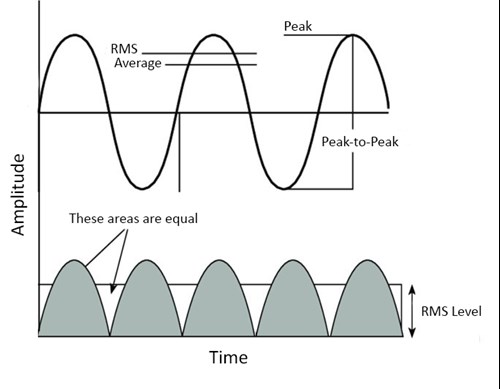The Fundamentals of Measuring Vibration

Vibration monitoring can help your machines run more reliably, efficiently, and safely
Vibration monitoring systems play a vital role detecting potential issues in machinery and equipment in many diverse industries. These systems currently monitor rotating and reciprocating machinery such as pumps, turbines, motors, compressors, fans, and other equipment, like piping and support structures. They extrapolate information on the health of the equipment by detecting irregularities or anomalies. This information can be used to support the efficiency and longevity of the machinery and or equipment.
Use of Vibration Through History
Machines and other mechanical systems vibrate due to the different forces and stiffnesses acting on them. This vibration can provide valuable insight about how the machine is operating and where any potential issues are located. Though there are complex and precise systems in use today, historical uses of vibration monitoring were developed and used until more modern systems were created.
One such vibration monitoring method, the fishtail method, uses a piece of wood with a V-shaped notch placed against the rotating shaft. A technician carefully uses a stick against the rotating shaft to feel or sense the vibration level. Another older vibration monitoring system is the screwdriver method. A skilled technician uses the conductive path of the screwdriver to isolate the location of vibration in a machine. Though they required experienced technicians and may seem rudimentary, both methods had value when they were created and used. Fortunately, vibration measuring methods have come a long way since these methods were popular.
Current vibration monitoring systems are much more advanced. They collect information on how the machine is vibrating and use this information to find patterns or irregularities that arise in the vibration output. This data can help operators find and repair issues before they occur instead of waiting for visible or audible changes to indicate a problem. When the operator with no monitoring equipment can pick up these changes, the problem has already risen in severity. It may have resulted in more damage than if the problem had been caught earlier. Since businesses have recognized the value of vibration monitoring, vibration sensors have become a part of comprehensive systems monitoring the machinery, and other equipment in the plant to ensure the process continues to operate and the people and facility remain safe.
What is Vibration?
Understanding the functionality of these systems requires an understanding of vibration itself. Vibration is the mechanical oscillation or movement about an equilibrium position of a component or machine. It can be random, like the movement of a tire on a gravel road, or periodic, like the motion of a pendulum. Technically, vibration is a ratio of forces to stiffnesses. In rotating or reciprocating machinery, and in structural elements, the vibration levels change depending upon the forces changing or the stiffness changing or both.
There are two ways that an object can vibrate: free vibration and forced vibration.
● Free vibration. This occurs when a structure or object is impacted or displaced, then allowed to oscillate naturally. A tuning fork is an example — after you strike the fork, the fork vibrates at its natural frequency, and the sound diminishes due to damping forces. This is similar to various musical instruments like a piano, guitar, drums, etc.
● Forced vibration. This type of vibration is applied to a mechanical system. For example, a washing machine could be shaking because of an unbalance. Unbalance is a good example of forced vibration. On rotating machines residual unbalance is normal for most machinery. It is impractical to perfectly balance the machinery due to cost. As long as the unbalance is within limits and acceptable, as measured by the vibration, the machine can operate an infinite number of cycles without degradation.
How is Vibration Measured?
Vibration is measured and reported in terms of velocity, acceleration, and or displacement. The units of measurement depends upon the design of the vibration transducer and what it is measuring.

● Displacement. The distance the object travels. For vehicles, the distances are large, so they are measured in miles or kilometers. Contrarily, the distance an object vibrates will be small, so the measurement is in mils (1/1000 inch) or microns (1/1000 mm). In terms of vibration, the measurement will be in mils peak to peak, or microns peak to peak. Displacement is usually measured with proximity probes measuring the relative motion of the rotor to the casing with machines using fluid film (sleeve or journal) bearings. On slow moving machines (10 Hz or less), with rolling element bearings, a velocity sensor is employed, but the output is integrated to displacement to provide a more meaningful measure of the vibration.
● Velocity. This is the rate at which the displacement occurs – or the time rate of change of the displacement. In using the car analogy above, larger units like miles per hour or kilometers per hour are used. With rotating or reciprocating machinery, smaller units such as inches per second (ips) peak or millimeters per second (mm/s) peak, are used for vibration. Depending on the plant or facility, instead of units of velocity peak, some people use velocity in terms of RMS peak. RMS means root mean square of the velocity, which is the total amount of energy or area under the rectified vibration sine wave. So, velocity can also be expressed as ips RMS peak or mm/s RMS peak.
● Acceleration. This is the time rate of change of the velocity. Using the vehicle analogy, you can sense the acceleration when you press the accelerator, and you speed up or you press on the brake, and you decelerate (slow down). For rotating and reciprocating machinery, the units of measurement are in g’s peak or meters per second squared (m/s2) peak. As in the velocity case above, acceleration can be expressed in terms of g’s RMS peak or m/s2 RMS peak.
Typically, displacement units are used when talking about proximity sensors, and velocity and acceleration units are used when talking about seismic sensors. Proximity sensors are usually used with fluid film bearing machines and seismic sensors are usually used with rolling element bearing machines. The choice in sensor has a lot to do with the signal to noise ratio of the vibration signal generated from the machine, given the particular bearing arrangement and speed of the machine.
Tools for Detecting Machine Vibrations
As previously mentioned, vibration detection equipment has improved to provide early warning of changes in machine’s condition. There are number of choices.
● Vibration Sensors and Monitoring Systems. These systems provide the overall amplitude of the vibration. The amplitude of the vibration is indicative of the severity of the vibration. However, it should be noted that changes in the vibration amplitude from normal is what really needs to be watched for. This is due to vibration levels going up or down significantly from normal are usually indications of a machine problem. These systems can be sophisticated too, not only using overall amplitude, but also looking at the amplitude and phase angle of the vibration. If the system uses proximity sensors, the position can also be monitored along with the phase angle and vibration amplitude.
● Vibration Transmitters and Control Systems. These systems take advantage of the simplicity of the vibration transmitter. The vibration transmitter takes a complex vibration signal and converts it to an easily interpreted 4-20mA output suitable for control systems.
● Vibration Meter. These work by reading and measuring the vibration from a machine collected by a vibration sensor attached to the machine usually at a single point. This system consists of a vibration sensor, cable, and reader that displays the machine’s vibration values at the measurement point.
● Vibration Analyzer. This instrument measures the vibration simultaneously from multiple points along the machine train. This system provides a better picture as to what is happening inside the machine. These systems take advantage of the entire vibration waveform, including vibration amplitude, frequency, phase angle, vibration form, and, if using proximity probes, machine position. These systems are typically coupled with vibration monitoring systems mentioned above.
Measuring vibration has many applications across many different industries. Contact us today if you have questions about how your machinery can benefit from vibration monitoring. Metrix Vibration and our vibration monitoring equipment can help your machines run more reliably, efficiently, and safely. We look forward to hearing from you.
